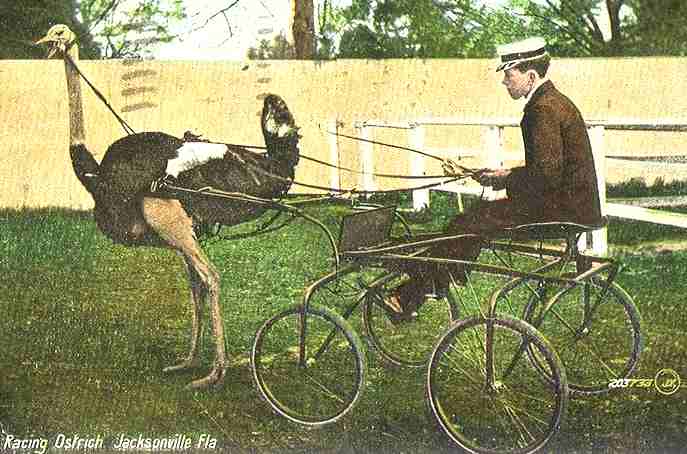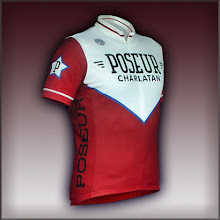
The following is a guest blog from Bob Shanteau.
The current slow moving vehicle law is discriminatory in the following way:
ARTICLE III. DRIVING ON RIGHT SIDE OF ROADWAY
OVERTAKING AND PASSING USE OF ROADWAY11-301.
Drive on right side of roadway exceptions
(a) Upon all roadways of sufficient width a vehicle shall be driven upon the right half of the roadway, except as follows:
1. When overtaking and passing another vehicle proceeding in the same direction under the rules governing such movement;
2. When an obstruction exists making it necessary to drive to the left of the center of the highway; provided, any person so doing shall yield the right of way to all vehicles traveling in the proper direction upon the unobstructed portion of the highway within such distance as to constitute an immediate hazard;
3. Upon a roadway divided into three marked lanes for traffic under the rules applicable thereon; or
4. Upon a roadway restricted to one-way traffic.
(b) Upon all roadways any vehicle proceeding at less than the normal speed of traffic at the time and place and under the conditions then existing shall be driven in the right-hand lane then available for traffic, or as close as practicable to the right-hand curb or edge of the roadway, except when overtaking and passing another vehicle proceeding in the same direction or when preparing for a left turn at an intersection or into a private road, alley, or driveway.
(c) Upon any roadway having four or more lanes for moving traffic and providing for two-way movement of traffic, no vehicle shall be driven to the left of the center line of the roadway, except when authorized by official traffic-control devices designating certain lanes to the left side of the center of the roadway for use by traffic not otherwise permitted to use such lanes, or except as permitted under subsection (a)2 hereof. However, this subsection shall not be construed as prohibiting the crossing of the center line in making a left turn into or from an alley, private road or driveway.
The reason for this discussion about clarifying UVC section 11-301(b) appears to be confusion over the phrase: "any vehicle proceeding at less than the normal speed of traffic at the time and place and under the conditions then existing shall be driven in the right-hand lane then available for traffic, or as close as practicable to the right-hand curb or edge of the roadway", in particular the meaning of the word "or" in that phrase. Note that it is only necessary to satisfy one of the conditions in order to comply with the law (otherwise the word "and" would have been used). Let's call the conditions A and B:
Condition A = driving in the right-hand lane then available for traffic
Condition B = driving as close as practicable to the right-hand curb or edge of roadway
On an unlaned roadway, condition A cannot apply, leaving only condition B. So the driver of a slow moving vehicle on an unlaned roadway who drives as far to the right as practicable is in compliance with UVC 301(b).
On a laned roadway, the right edge of the roadway usually coincides with the right-hand lane then available for traffic. The exception would be for a right-hand preferential lane, such as a bike lane. If there is no preferential lane, then the right side of the right-hand lane coincides with the right-hand curb or edge of the roadway, in which case Condition A and Condition B are not mutually exclusive. In fact, on such a roadway Condition B is a subset of Condition A, meaning that by meeting Condition B you also meet Condition A.
So the driver of a slow moving vehicle on a laned roadway who drives in the right-hand lane then available for traffic is in compliance with UVC 301(b). If that driver were also required to drive as close as practicable to the right-hand curb or edge of roadway, UVC 301(b), Condition A would not even have been necessary.
In fact, that is exactly the case for UVC 11-1205(a):
ARTICLE XII.OPERATION OF BICYCLES, OTHER HUMAN-POWERED VEHICLES, AND MOPEDS11-1205.
Position on roadway
(a) Any person operating a bicycle or a moped upon a roadway at less than the normal speed of traffic at the time and place and under the conditions then existing shall ride as close as practicable to the right-hand curb or edge of the roadway except under any of the following situations:
1. When overtaking and passing another bicycle or vehicle proceeding in the same direction.
2. When preparing for a left turn at an intersection or into a private road or driveway.
3. When reasonably necessary to avoid conditions including, but not limited to, fixed or moving objects, parked or moving vehicles, bicycles, pedestrians, animals, surface hazards, or substandard width lanes that make it unsafe to continue along the right-hand curb or edge. For purposes of this section, a "substandard width lane" is a lane that is too narrow for a bicycle and a vehicle to travel safely side by side within the lane.
(b) Any person operating a bicycle or a moped upon a one-way highway with two or more marked traffic lanes may ride as near the left-hand curb or edge of such roadway as practicable.
By not containing Condition A, UVC 11-1205(a) deprives slow moving bicyclists of the same right to use the right-hand lane as other drivers. That is, someone driving a vehicle slower than other traffic in the center of the right lane, even though it would be practicable to drive further to the right, is in compliance with UVC 11-301(b), but a bicyclist who does the same thing is in violation of UVC 11-1205. In 1975-76, when I helped write the exceptions that became law in California and later became UVC 1205(a), I thought that we were establishing that bicyclists had the same lane rights as other drivers, but now I realize I was mistaken.
This lack of equality in the law's treatment of the operators of vehicles and of bicyclists is one of the things bicycle advocates ought to focus on. The most straightforward way of eliminating the inequality is simply to repeal UVC 11-1205, in which case bicyclists would be subject to the same slow moving vehicle law (UVC 11-301(b) or the equivalent) as other drivers.
If one argues that bicyclists should be required to move to the right side of the right lane in order to facilitate faster traffic for no other reason than that they are riding bicycles, then that would be the same as saying that bicyclists should not have the same road rights as other drivers and that there is no such thing as "driving your bicycle".
When I used to advocate for separating bicyclists from other traffic with bike lanes, I used to think that way. But I abandoned that way of thinking when I decided to drive my bicycle instead.
Robert M Shanteau, PhD, PE
Consulting Traffic Engineer (I became a traffic engineer over 30 years ago through bicycle advocacy)
Expert Witness
Member, Institute of Transportation Engineers
Member, Society of Forensic Engineers and Scientists
President, Monterey County Bicycling Advocacy Group
Ex-secretary, California Association of Bicycling Organizations (1973)
Ex-president, Santa Clara Valley Bicycle Association [Now Silicon Valley Bicycle Coalition] (1972-1974)
Ex-president, East Bay Bicycle Coalition (~1978)
Publications:
"Are Sidepaths Included in the Definition of Class I Bikeways (Bike Paths)?" presented to the California Bicycle Advisory Committee, August 2, 2007
"Meeting the Challenges of Sidepath Intersection Design", presented to the California Bicycle Advisory Committee, October 6, 2007
"Proposed Revisions to the Caltrans Highway Design Manual to Address Sidepaths", presented to the California Bicycle Advisory Committee, December 6, 2007
"Detecting Bicycles and Motor Vehicles Using the Same Loop Detector", presented to the California Department of Transportation Electrical Systems Branch, October 16, 2007
Dr. Shanteau's Blog



Dang, got the Big Guns now!
ReplyDeleteI asked Dr. Shanteau if I could publish his comment on a e-mail list, with a slight modification for a more general audience.
ReplyDeleteI am glad for all of us that he graciously agreed. As I had mentioned in a earlier post, I stand on the shoulders of giants.
Dr. Shanteau is one of the foremost.
This is an interesting contrast with Forester's recollection of how the FTR exceptions came about.
ReplyDeleteWere it not for the "bike lane" caveat and the lack of a right-turn lane exception, I'd say the Texas law, with its 14 foot definition of a narrow lane pretty much satisfies Condition A.
The problem for the cyclist, under Texas's discriminatory wording, is that the cyclist must endure occasional harassment from law enforcement and then justify his lane position to either the officer who has stopped him, or a judge.
ReplyDeleteWhat a great post on this topic. I agree completely that the "lack of equality in the law's treatment of the operators of vehicles and of bicyclists is one of the things bicycle advocates ought to focus on." Bicycles are slow moving vehicles; it really does not need to be any more complicated than that.
ReplyDelete